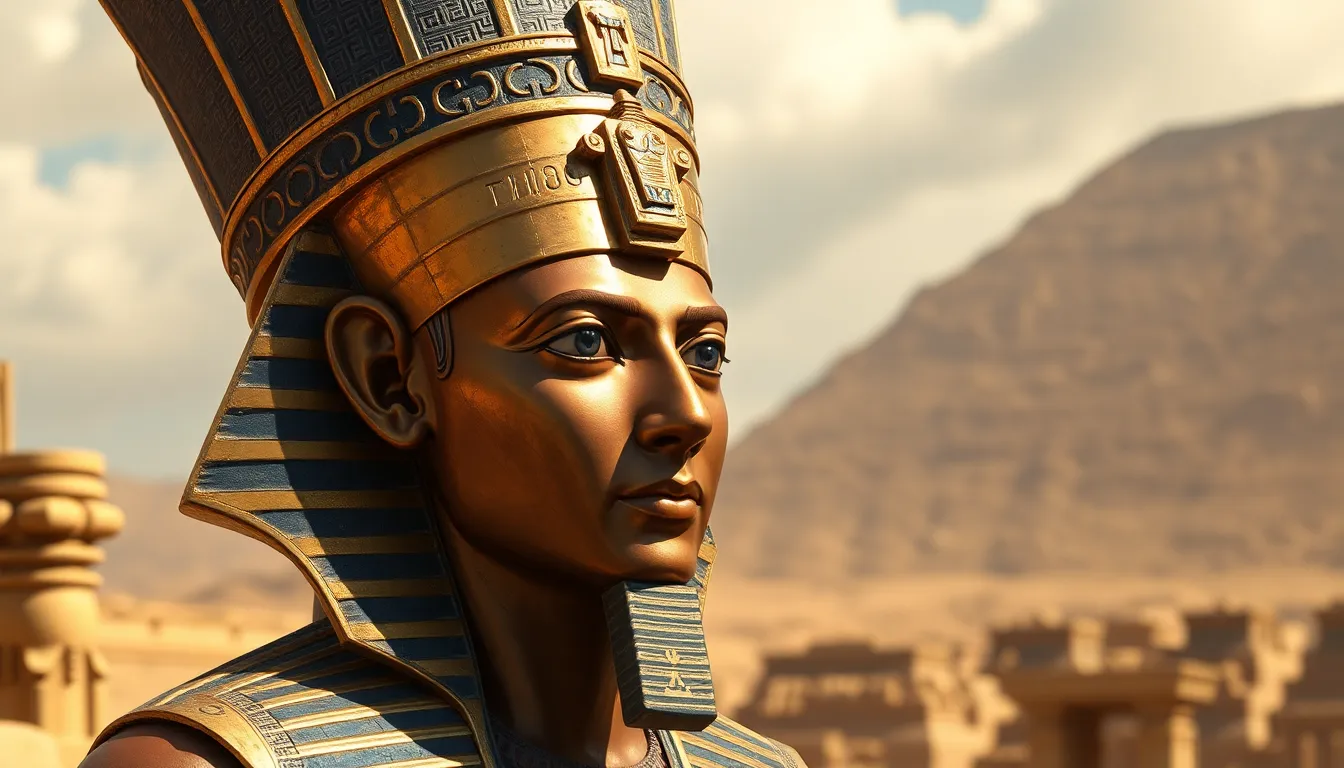The Myths of Pharaoh Merneptah’s Role in Egyptian History
I. Introduction
Pharaoh Merneptah, the fourth ruler of the Nineteenth Dynasty of Egypt, is a figure whose reign has been enveloped in a mix of historical fact and myth. Born to the renowned Pharaoh Ramses II, Merneptah ruled from approximately 1213 to 1203 BCE. His reign is notable not only for its military campaigns but also for the cultural and political contexts that defined ancient Egypt during this period.
Addressing the myths surrounding Merneptah is crucial for a comprehensive understanding of his historical narrative. Many interpretations have led to misconceptions that obscure the realities of his reign. This article aims to clarify these myths and provide a more nuanced view of Merneptah’s contributions to Egyptian history.
II. Historical Context of Merneptah’s Reign
The Nineteenth Dynasty was a pivotal era in ancient Egyptian history, marked by territorial expansion and cultural achievements. Merneptah ascended to the throne during a time of relative stability but faced challenges that would shape his rule.
- Background of the 19th Dynasty: The 19th Dynasty is often viewed as the height of Egyptian power, characterized by strong leadership and monumental architecture.
- Key events during Merneptah’s reign (1213-1203 BCE): His reign included significant military campaigns, notably against the Libyans and the Sea Peoples.
- Political and social climate of ancient Egypt: The socio-political landscape was complex, with various factions and external pressures influencing policy and governance.
III. Myth 1: Merneptah as a Military Genius
One of the most enduring myths surrounding Merneptah is his portrayal as an unparalleled military genius. While he did lead successful campaigns, a closer examination reveals a more complex reality.
The Merneptah Stele, a significant artifact from his reign, boasts of his military victories, including a famous battle against the Libyans. However, the stele is not without its controversies. The claims of total victory can be misleading.
- Examination of military campaigns: Merneptah fought against various groups, including the Libyans and the Sea Peoples, but faced significant challenges that hindered his success.
- Analysis of the Merneptah Stele and its implications: The stele serves as a propaganda tool, emphasizing victories that may not reflect the full scope of his military capabilities.
- Debunking the myth of unmatched military success: While Merneptah was an able commander, his military achievements were not without setbacks, contradicting the notion of him as a military genius.
IV. Myth 2: The “Israel” Reference as Evidence of Cultural Conflict
The mention of “Israel” in the Merneptah Stele has often been interpreted as evidence of a cultural conflict between Egypt and the Israelites. This interpretation, however, warrants closer scrutiny.
- Understanding the context of the Merneptah Stele’s mention of Israel: The reference to Israel appears in a list of defeated peoples, yet the context is often misinterpreted.
- Misinterpretations of the term “Israel”: Some scholars argue that “Israel” may not refer to a unified nation but rather a group of tribes.
- The broader implications for Egyptian-Israeli relations: The relationship was complex, and the mention of Israel does not necessarily imply ongoing conflict.
V. Myth 3: Merneptah’s Role in the Decline of the Egyptian Empire
Another prevalent myth is that Merneptah’s reign marked the beginning of the decline of the Egyptian Empire. While his reign faced challenges, attributing the decline solely to him is overly simplistic.
- Exploration of the factors contributing to Egypt’s decline: Various factors, including economic troubles and external invasions, played a significant role.
- Merneptah’s policies and their impacts: His policies often aimed at maintaining stability rather than contributing to decline.
- Differentiating between myth and reality in historical decline narratives: The narrative of decline must consider broader socio-political dynamics beyond Merneptah’s reign.
VI. Myth 4: Merneptah as a Harbinger of the End Times for Egypt
Some interpretations suggest that Merneptah’s reign heralded an apocalyptic end for Egypt. This view, while popular in certain circles, lacks substantial historical backing.
- Analysis of the apocalyptic interpretations of his reign: Such interpretations often stem from a misunderstanding of the historical context and subsequent events.
- Historical continuities following Merneptah’s rule: Following his reign, Egypt experienced additional dynasties that continued cultural and political traditions.
- The role of later dynasties in shaping the narrative: Later rulers and dynasties contributed significantly to the legacy of Egyptian civilization, contradicting the notion of a definitive decline.
VII. Legacy of Merneptah in Egyptian History
Merneptah’s legacy is multifaceted and extends beyond military conquests. His contributions to culture and society are significant.
- Contributions to Egyptian culture and society: Merneptah’s reign saw advancements in art, architecture, and literature.
- Historical significance beyond military and territorial claims: His efforts in diplomacy and governance also played crucial roles in sustaining Egyptian civilization.
- The evolution of Merneptah’s legacy in modern scholarship: Contemporary historians continue to reevaluate Merneptah’s impact, recognizing the complexities of his reign.
VIII. Conclusion
In summary, the myths surrounding Pharaoh Merneptah highlight the complexities of interpreting historical narratives. From his military capabilities to his alleged role in the decline of the Egyptian Empire, it is essential to critically analyze these claims. The importance of understanding the true place of Merneptah in Egyptian history cannot be overstated; it allows for a richer and more accurate portrayal of one of history’s intriguing figures.
Through careful examination of myths and realities, we gain a deeper appreciation for Merneptah’s contributions and the broader historical context in which he operated. Ultimately, the legacy of Merneptah reminds us of the intricate tapestry of Egypt’s past and the necessity of critical historical analysis.




